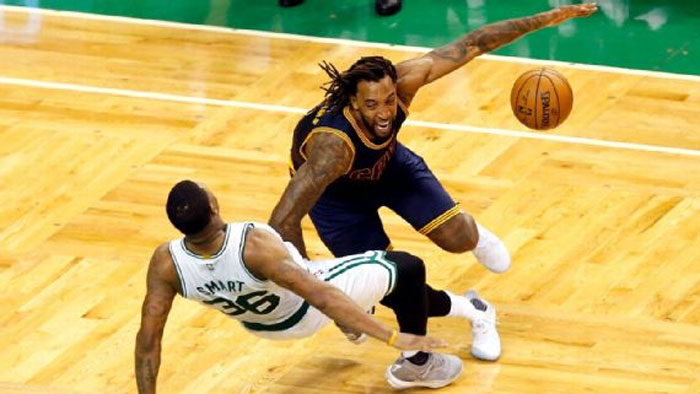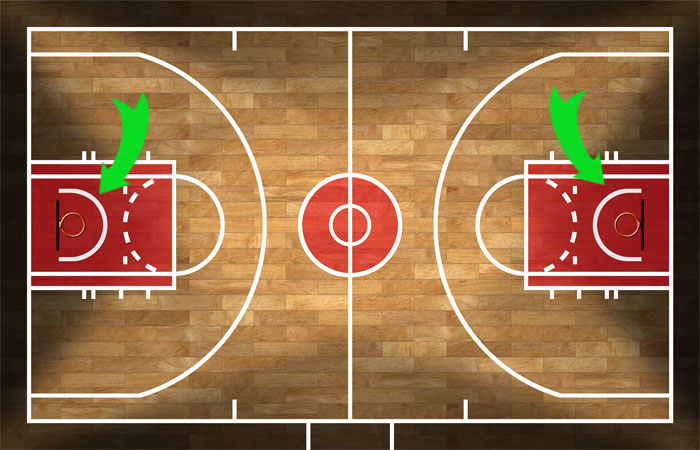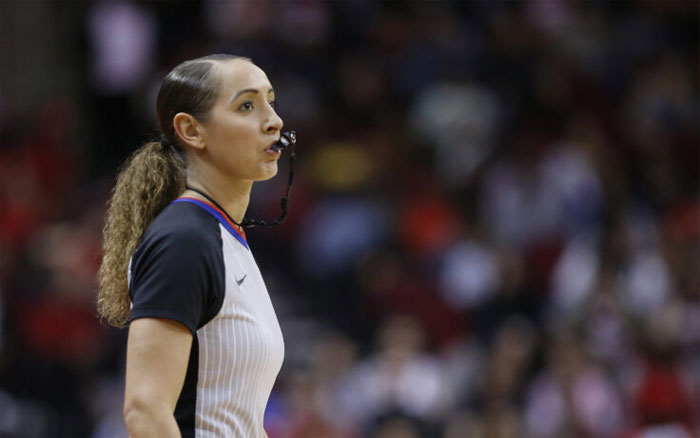There are several ways to shift the game’s momentum and turn the tide in favor of your team in basketball.
One effective way is to take charge against a player advancing towards the basket. However, this risky move might instantly backfire if you miss the timing.
Also, this action happens rather too quickly; thus, referees have a hard time ruling it correctly. However, the introduction of the restricted area helps in alleviating this issue.
This article will help you understand the history of the restricted area and its influence on basketball as a sport. So, let’s take a look.
History of the Restricted Area
The 1997-98 season has brought on the restricted area for the first time in the NBA. This inclusion resulted from how helpful that area proved to be in other basketball leagues.
Later, during the 2010-11 season, this rule became a part of college basketball. So, it played a role in unifying the game's rules around the globe.
Since implementing the restricted area, defensive play has become a much safer affair. Because of it, players are extra careful when sneaking up on someone in mid-air.
Besides the charge, the restricted area also gives referee's a reference point to make a better call in that split second.
The Difference Between Charging and Blocking
The restricted area relates closely to taking charge and blocking. Hence, it is essential to understand those two fouls before dwelling on the details of the restricted area.
Charging occurs when a defender correctly plants himself in front of an offensive player, forcing him to commit a foul. The restricted area is where this kind of strategy can take effect.
In other words, that part of the court favors the team currently on defense. So, if the player who tries to score loses control over his steps, referees will call that a “charge”.

Greg M. Cooper/USA TODAY Sports
Hence, the defensive player can set up a trap of sorts and utilize this advantage.
On the other hand, a blocking foul is when the defender uses too much force to stop the opposing one’s movement. So, even in this area, the defensive player should be quick with their positioning.
How to Induce a Charging Foul?
When ruling an offensive play as a charge, referees first look at foot placement. They must be entirely on the ground to claim a charging foul.
Secondly, your body needs to be in a squatting position. A good jumper is always in a steady form, facing his target.
So, a correct jump into the charging player requires the defender to face the offensive player while keeping his body square.
The most crucial point is to protect yourself. It is essential to cover up once you square your body because you will take a hit.
Lastly, fall on your back to minimize impact. A face-forward fall can lead to wrist and knee injuries.
A Charging Foul and a Blocking Foul
A charging foul occurs when the defender places themselves in the correct position of the advancing player.
So, referees will rule an offensive foul if the opposing player collides with a defender who stays with both feet within the restricted area.
Hence, they fell for this trap. However, remember that this occurs fast in monition and is not easy to pull off.
In contrast, a blocking foul is when the defender hasn't yet placed both feet firmly in the restricted area.
If they stand in the line of movement of the other player but only partially, that would be a defensive foul. Again, all this occurs in a split second, so both cases are pretty common in a match.
What Is a Restricted Area?
The restricted area is also called the 'no charge zone' or a 'restricted arc.'
It is a semi-circular arc painted inside the key, approximately four feet from the basket. The rules regarding this area can be a little tricky to understand.
However, defenders can benefit from mastering how to utilize the restricted area. The attacker will often avoid risking an offensive foul since the defender may take advantage of that space.

Benefits of the Restricted Area
There are two significant advantages of the restricted area. One is to protect the players, and the second is to allow fair play for the airborne offensive player.
Such nuances contribute to the excitement of basketball. This means that every instance is an opportunity for defenders to try and lure the opposing team into committing a charge.
Referees are aware of this fact, so they keep a close eye on the area around the basket. Ruling a charging foul is all the more difficult when the attacking player tries to score by jumping and shooting.

If they do so further away from the net, an experienced defender might try and run up to them before they land. Next, it might seem like they “charged” into the defender due to how fast this happens in action. Hence, the referee’s job is never easy.
Also, it is because of tactics like those that we see the restricted area today. It limits the utility of such defensive maneuvers to a much smaller space.
In turn, this levels the playing field. Since it is impossible to shift body movement mid-air, defenders have an unfair advantage in those moments. Thankfully, today this goes only within the restricted area.
Therefore, the arc forces the other defensive player to wait further away from it. Inside, they can spend a maximum of three seconds.
In turn, this makes the defensive play all the more important in a game. It is why coaches develop elaborate schemes that might trick the opponent.
After all, if players move in unison, this happens in a mere moment or two. That is the ultimate result of including the restricted area in the NBA.
Dimensions
At first, the NBA used an arc that was only three feet from the basket. However, they changed the distance to four in the following years.
That switch was more in line with the FIBA regulations (FIBA uses a larger arc, i.e., 4.1 feet). The width of the arc extends to the sides of the backboard.
Initially, there was a debate about keeping the arc small for college basketball. Yet, they concluded to keep those parameters since the restricted area is a control issue, regardless of the lanes. In turn, this unified the international rules even more.
Rules of Restricted Area
Firstly, the restricted area stretches all the way to the ceiling. This rule implies that it is a foul even if the player has heels off the ground but above the line.
Secondly, the restriction of staying outside the area applies to the secondary defender and not to the primary defender. Hence, the primary defender can draw a legal charge inside the restricted area, but a secondary, off-ball defender cannot.
However, if the offensive player enters the restricted area from behind the basket, he does not get this protection.
Lastly, the secondary player can contact the offensive player, provided he complies with the rules of verticality.
Rules of Verticality
These rules state that the offensive and the defensive player must be in the air while making a goal attempt.
They should align their bodies vertically with vertical trajectories. This rule mandates that the defender have his arms straight up and not charge forward into the offensive player.
Exceptions to the Rules
The rules regarding restricted areas are straightforward and clear. Still, it is up to the referee to make the call, and in some cases, they review the practices.
For example, did the offensive player commit a boundary line foul before the restricted area foul? Was the offensive player creating extra space using tricky foot placement?
A key exception to the rule is the ‘low post rule.’ If the offensive player receives the basketball in the low post, then any number of players can be inside the restricted area.
Either way, this set of rules often prompts the referees to review their calls. Things like extra contact or correct foot placement are not easy to spot in real-time.
Key Takeaway
The restricted area is one of the few rules that was a welcome addition in the name of fair play. Hence, it is no wonder why other basketball leagues had already adopted it. Plus, it doubles as a safety measure.
You might also like: What is the Wing Position in Basketball?
